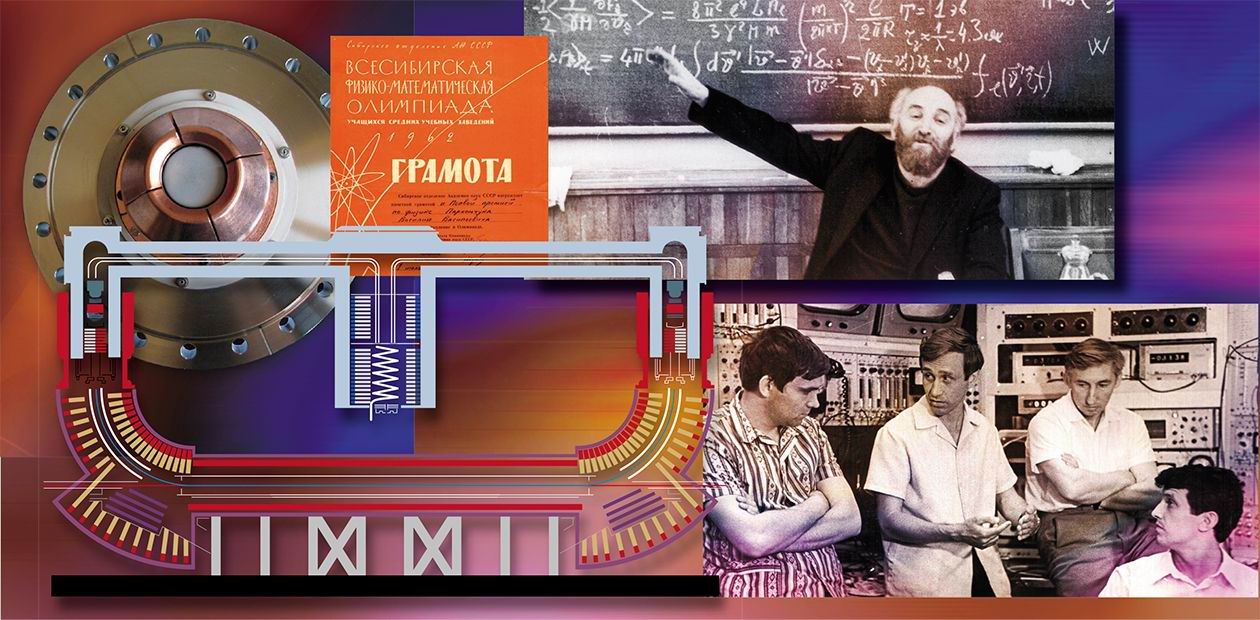Winner of 2016 Robert R. Wilson Prize Vasili Parkhomchuk: "I still have hope that electron cooling will be used in my country in the near future"
"It has been half a century since I first heard about colliding beams from Budker at his lecture conducted near a fountain at the first summer school for children who had won science competitions. Then, in 1962, Budker made an inspiring speech about applying the method of colliding beams of protons or electrons to study their structure. For ease of understanding, he compared the particles with steam locomotives rushing towards each other at nearly the speed of light. After such a powerful collision, all the inner elements of the particles (locomotives) fly apart, allowing scientists to consider them individually.
At that time, the capabilities of particle accelerators were such that the effective mass of the accelerated electrons increased by a factor of thousands, as predicted by the theory of relativity, and it was clear that the collisions of fast-moving heavy electrons with the light ones in the stationary target would be much less effective than the head-on collisions of high-energy heavy particles. The Physics and Mathematics School, Novosibirsk State University, and the Institute of Nuclear Physics finally made me Budker’s postgraduate student," recalls Vasili Parkhomchuk in his article devoted to the history of electron cooling (SCIENCE First Hand, 2012).
Then, Parkhomchuk together with a team of young physicists began to study electron cooling by experimentally testing a new idea of focusing heavy-particle beams, which had been formulated by Budker. It took them several years to achieve a practically significant result. During these years, Parkhomchuk's team did not publish a single paper; if it were today, under the conditions of the current system of grants, they would be fired. Nevertheless, thanks to the scientists’ enthusiasm and efforts, in 1974 the INP SB RAS launched the first accelerator based on this method.
Further development of electron cooling has brought success not only in elementary particle physics. It has led to very interesting results in medicine, namely, oncology. In the conventional X-ray therapy, the dose is at a maximum at the time when the beam enters the patient’s body, but falls substantially when it reaches the tumor. When using a high-energy ion beam, the ionization increases during the beam’s deceleration in the body to ensure the maximum destructive effect in the tumor zone. The use of electron cooling results in a small-sized ion beam, which can be easily focused. The focusing allows the concentration of higher radiation density in tumors only, reducing it to a minimum in healthy tissues.
The INP SB RAS has developed and manufactured ion accumulators based on the electron-cooling idea for many countries. The institute was actively involved in the development of this method in Japan, Sweden, and the United States. The setup for the accumulation of ion beams at the Large Hadron Collider was also developed and manufactured at the INP SB RAS.
“The fact that Germany now has four electron cooling setups and Russia has none illustrates our eternal problem that the shoemaker’s wife goes barefoot. Still, I have hope that electron cooling will be used in my country for academic research and practical applications in the near future,” says Parkhomchuk.
Perhaps, the prestigious prize awarded to the author of these words by the American Physical Society will bring us closer to this "near future."
For more detail, see the articles The Story of Electron Cooling and “Ion” Therapy for Cancer by Vasili Parkhomchuk.
Prepared by Sergey Prokopiev
Translated by A. Kobkova






